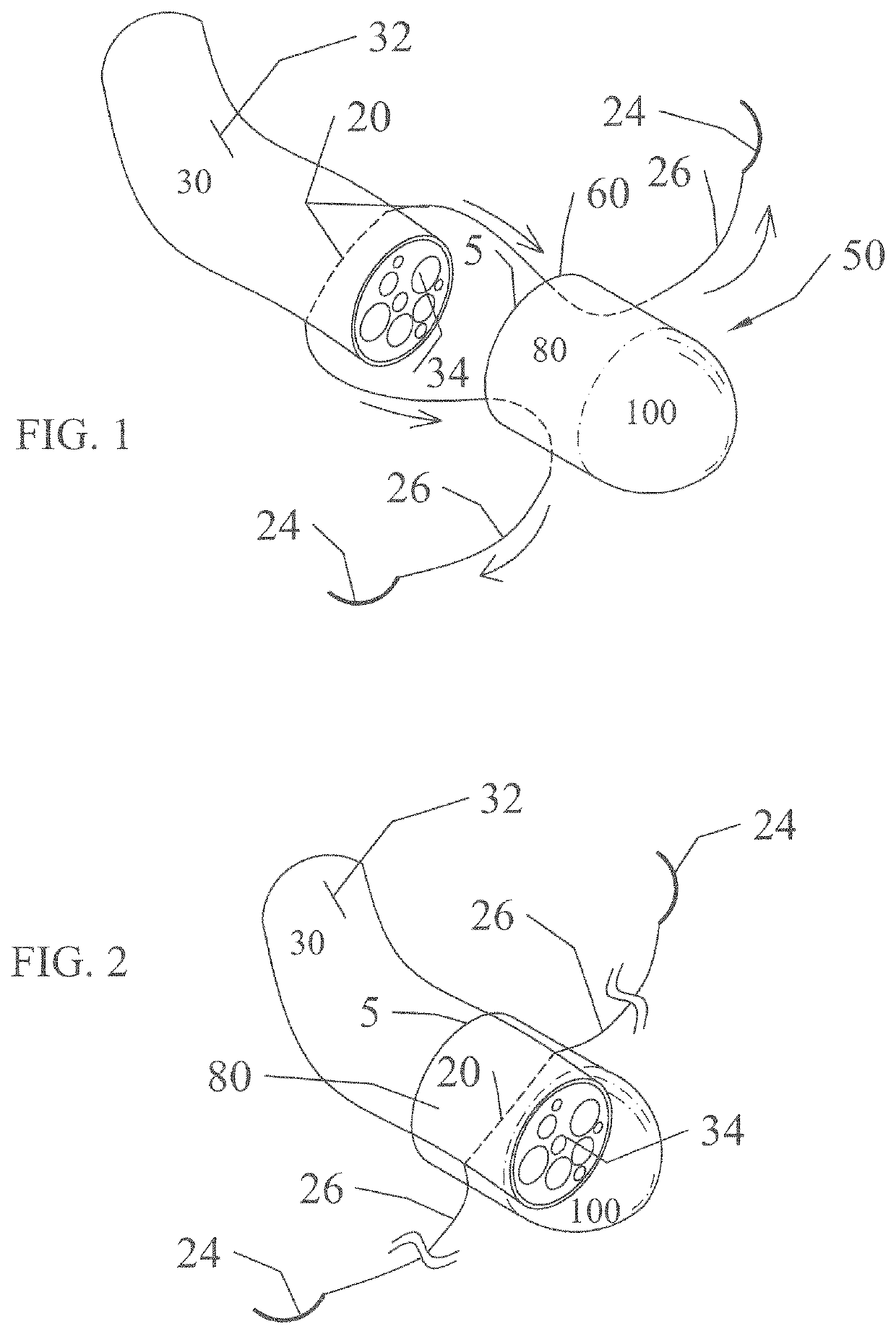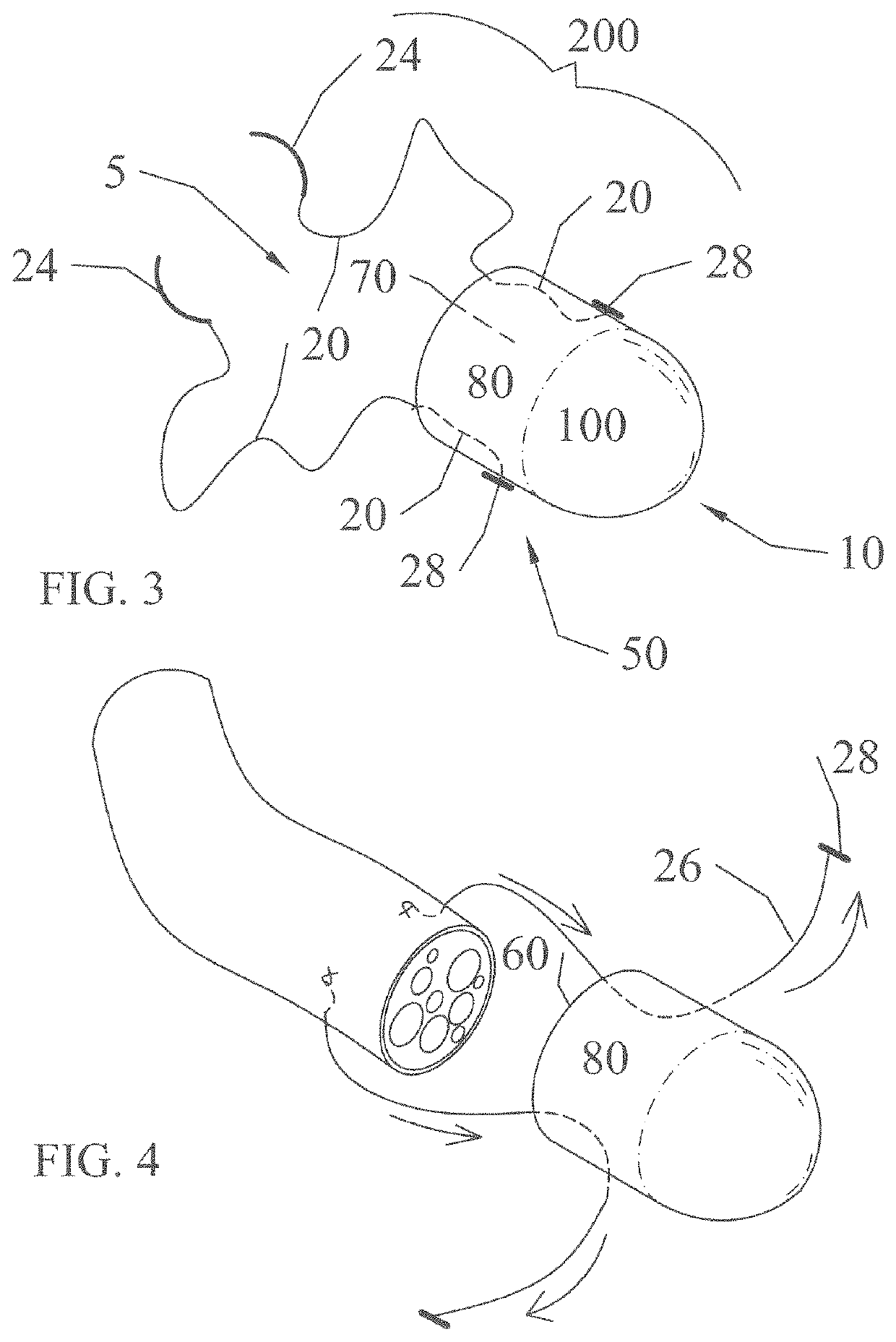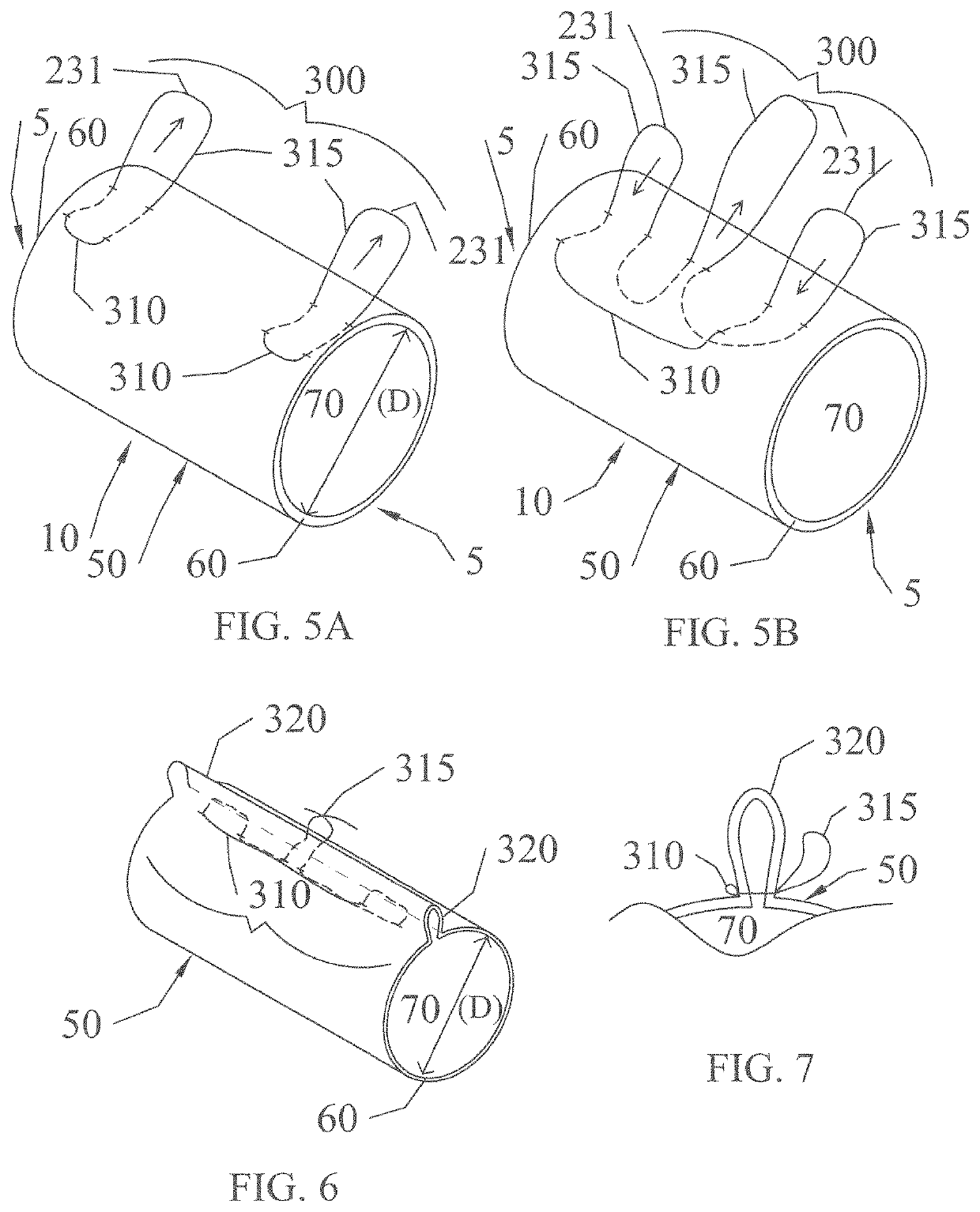Implant devices with a pre-set pulley system
a technology of pulley system and implant device, which is applied in the field of implant device with a preset pulley system, can solve the problems of difficult to achieve configuration, difficulty in inserting nerve ends into a properly sized sleeve or cap, etc., and achieves the effects of facilitating better and faster healing, minimizing incorrect neuronal growth, and reducing the risk of fractur
- Summary
- Abstract
- Description
- Claims
- Application Information
AI Technical Summary
Benefits of technology
Problems solved by technology
Method used
Image
Examples
Embodiment Construction
[0038]The subject invention pertains to embodiments of a sheathing implant, such as a nerve sleeve, nerve cap, or similar type of flexible implant capable of positioning and isolating nerve ends to facilitate nerve repair or prevent / isolate end bulb neuromas. More specifically, the subject invention provides sheathing implants capable of being used to coapt nerves to each other or to such sheathing implant. In particular there are provided sheathing implants with one or more suture pulley systems that can be used to attach to a nerve end and pull or draw the nerve end into the implant. Other embodiments provide nerve repair sheathing implants with a cinching loop that can be used to conform an implant to the shape and / or size of a nerve therein. These pulley systems can be used independently or in various combinations to effect a safe, secure, easy nerve repair in patients in need of such treatment.
[0039]The subject invention is particularly useful in the field of nerve repair, in p...
PUM
 Login to View More
Login to View More Abstract
Description
Claims
Application Information
 Login to View More
Login to View More - R&D
- Intellectual Property
- Life Sciences
- Materials
- Tech Scout
- Unparalleled Data Quality
- Higher Quality Content
- 60% Fewer Hallucinations
Browse by: Latest US Patents, China's latest patents, Technical Efficacy Thesaurus, Application Domain, Technology Topic, Popular Technical Reports.
© 2025 PatSnap. All rights reserved.Legal|Privacy policy|Modern Slavery Act Transparency Statement|Sitemap|About US| Contact US: help@patsnap.com



